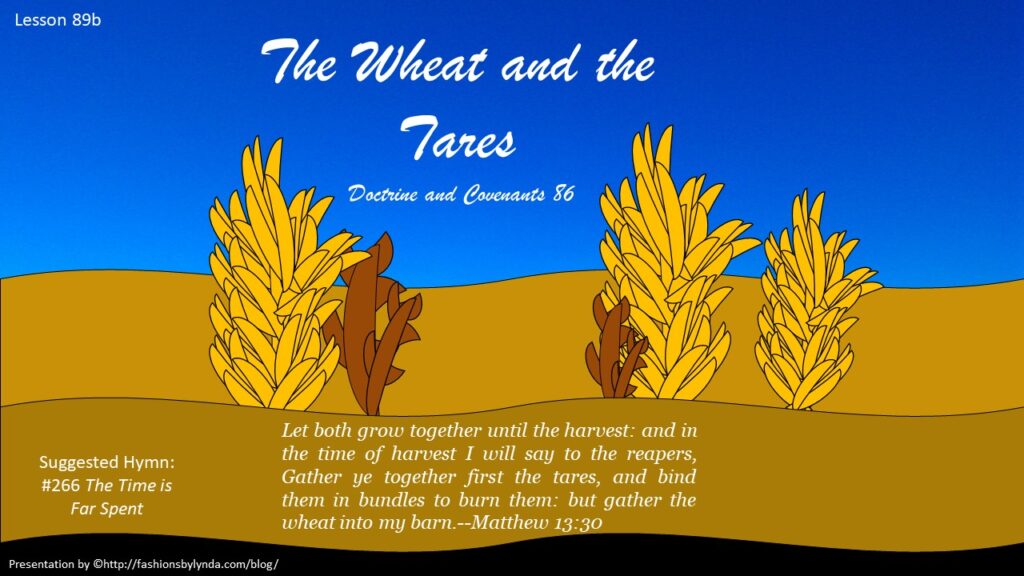
Doctrine and Covenants Seminary Helps Lesson 89b “The Wheat and the
The Parable of the Wheat and the Weeds, or Tares, is filled with spiritual significance and truth. But, in spite of the clear explanation of the parable that Jesus gave ( Matthew 13:36-43 ), this parable is very often misinterpreted.
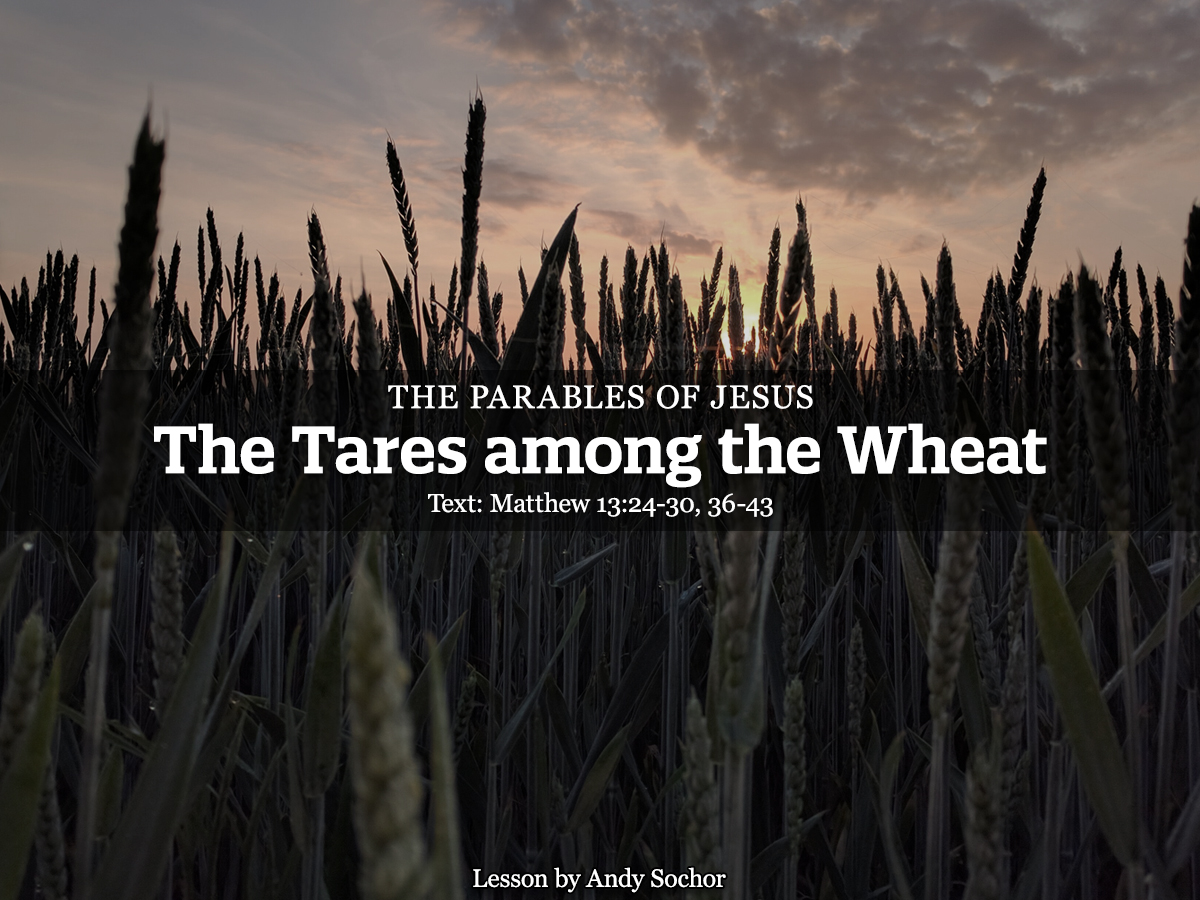
The Tares among the Wheat
Quick Reference Dictionary Tares Tares Easton's Bible Dictionary - Tares Tares [N] [S] the bearded darnel, mentioned only in Matthew 13:25-30 . It is the Lolium temulentum, a species of rye-grass, the seeds of which are a strong soporific poison.

Pin on shirley
The field is the world; the good seed are the children of the kingdom; but the tares are the children of the wicked one; New King James Version The field is the world, the good seeds are the sons of the kingdom, but the tares are the sons of the wicked one. New American Standard Bible

The Teachings of Our Lord The Parable of the Tares Among Wheat YouTube
A few weeks ago, members of our Hillsboro Bible study began discussing when life begins. To teach them the biblical perspective, I gave the members copies of "God's View of Babies Inside and Outside the Womb" which was written by Ralph Drollinger, President and Founder of Capitol Ministries who leads Bible studies to U.S. senators and representatives every week on the Hill in Washington.

The Parable of Wheat and Tares Wheat and tares, Parables, Wheat
24 Another parable He put forth to them, saying: "The kingdom of heaven is like a man who sowed good seed in his field; 25 but while men slept, his enemy came and sowed tares among the wheat and went his way. 26 But when the grain had sprouted and produced a crop, then the tares also appeared. 27 So the servants of the owner came and said to him.
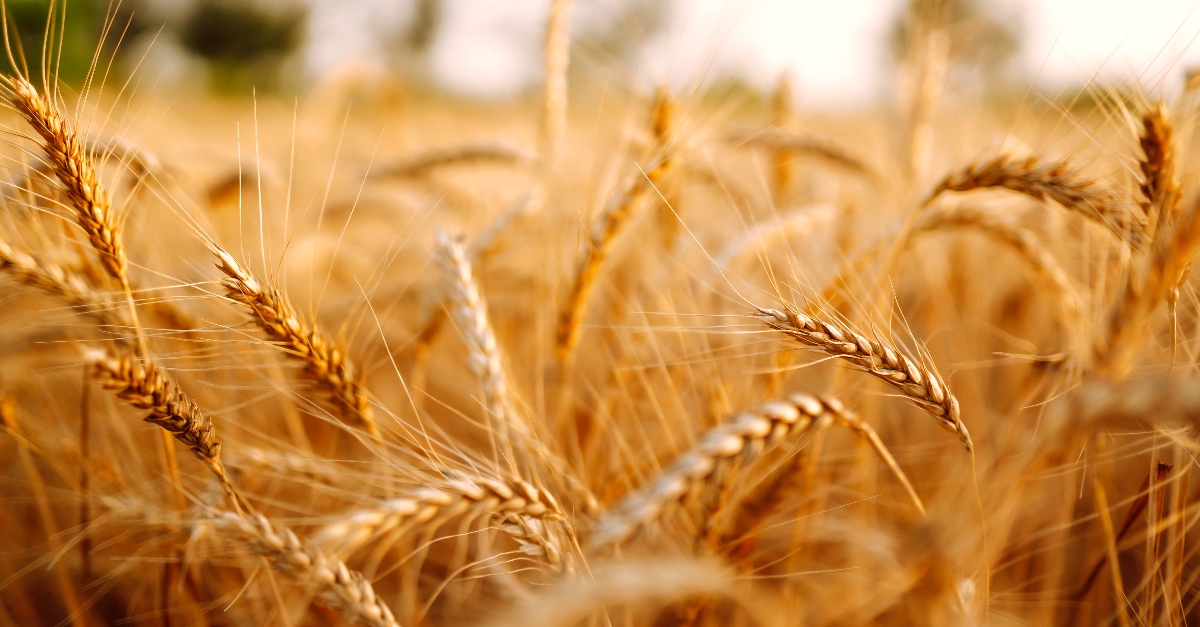
Why Does Jesus Share a Parable about Wheat and Tares? (Matthew 132430)
CHAPTER VERSE You searched for "TARES" in the KJV Bible Related words: Modify Search 8 Instances - Page 1 of 1 - Sort by Book Order - Feedback Matthew 13:29 chapter context similar meaning copy save But he said, Nay; lest while ye gather up the tares, ye root up also the wheat with them. Matthew 13:26 chapter context similar meaning copy save

Parable of the Wheat & Tares Bible Parable Lessons for Kids
The Parable of the Weeds or Tares ( KJV: tares, WNT: darnel, DRB: cockle) is a parable of Jesus which appears in Matthew 13:24-43. The parable relates how servants eager to pull up weeds were warned that in so doing they would root out the wheat as well and were told to let both grow together until the harvest.

lesson 87 Parable of Wheat & Tares Bible Lessons made easy AD Bible
The Parable of Wheat and Tares Jesus told a story known as the parable of the wheat and tares. In this particular story, He talked about a farmer who planted a crop of wheat. And during the night, his enemy came along and sowed tares, or weeds, among the wheat. Greg Laurie Senior Pastor, Harvest Christian Fellowship Updated Mar 17, 2023
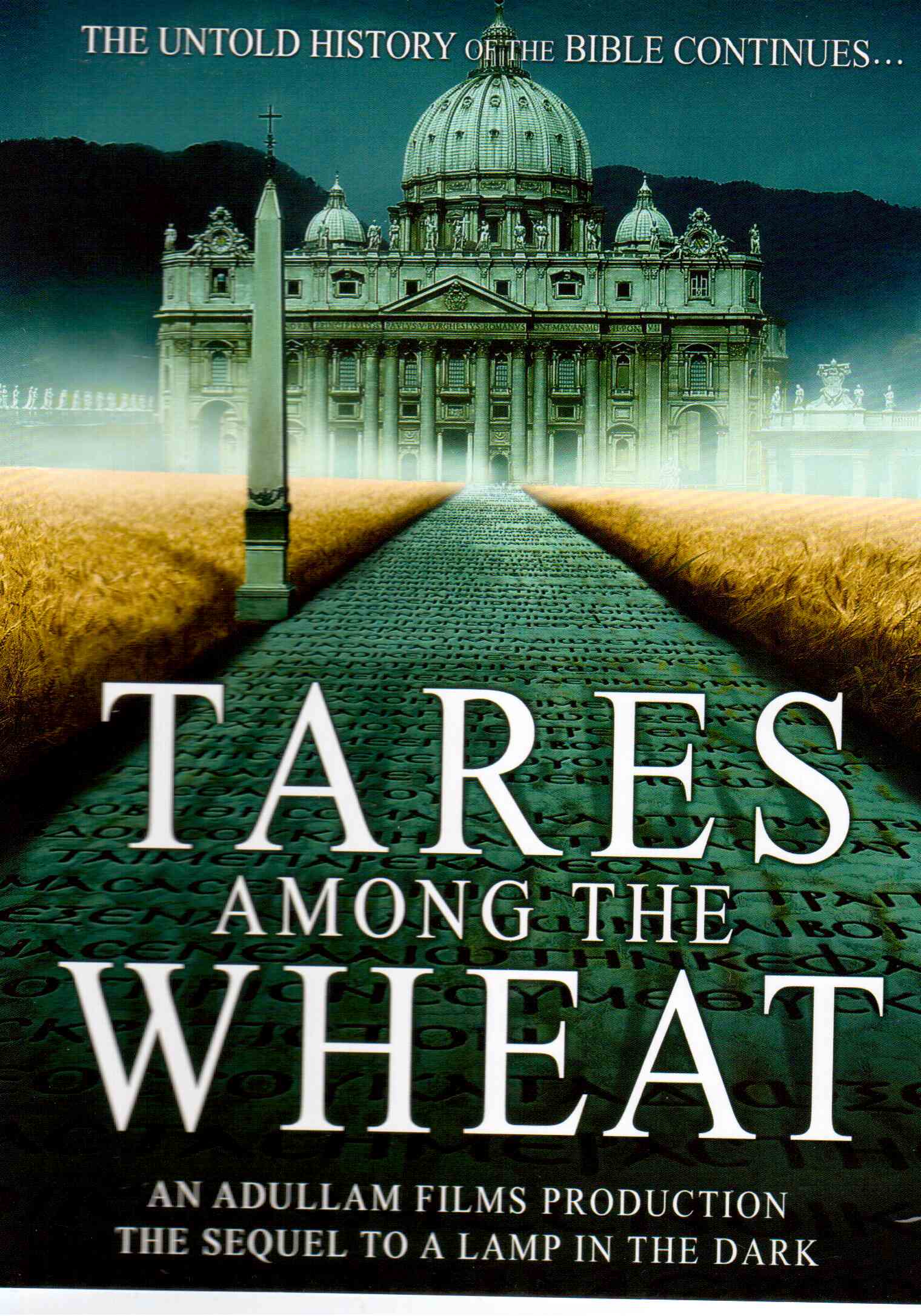
Trinity Foundation Online Store GodBreathed The Divine Inspiration
By no means one of Jesus' most popular parables, the parable of the wheat tares (also known as the parable of the weeds) has a somewhat harrowing tone when Jesus teaches this lesson in Matthew.

Why Jesus Shares a Parable of Wheat and Tares in Matthew 99.5 KKLA
Encyclopedia of The Bible - Tares Resources Encyclopedia of The Bible T Tares Tares TARES ( ζιζάνιον, G2429 ). Mentioned eight times in Matthew 13. Refers to a weed called darnel, which looks exactly like wheat in its young stages and, in fact, only the expert can distinguish some species of this darnel from the true wheat.

Speak the Truth in Love Wheat And Tares
What the Bible says about Tares, Dealing with ( From Forerunner Commentary ) Matthew 13:24-30 Christ's parable contains at least two warnings that are important to how we deal with possible tares within God's church. First, we need to be aware that tares—false members—are a reality.
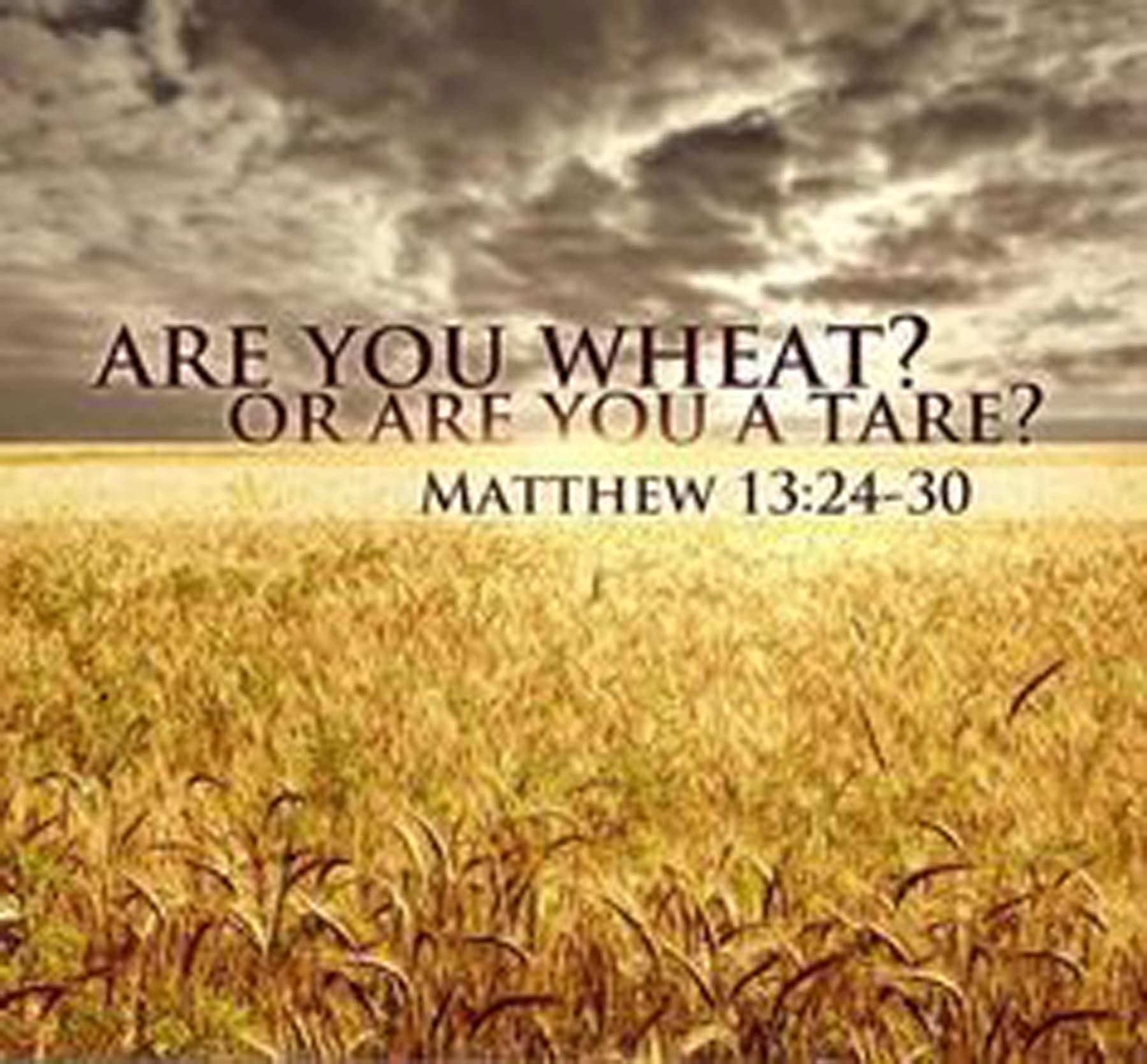
Parable Of The Wheat And The Tares Matthew Kjv Bible Youtube Hot Sex
The tares, known to botanists as the Lolium temulentum, or darnel, grew up at first with stalk and blade like the wheat; and it was not till fructification began that the difference was easily detected. It adds to the point of the parable to remember that the seeds of the tares were not merely useless as food, but were positively noxious.

Pin en
Matthew Chapter 13. 36 Then Jesus sent the multitude away, and went into the house: and his disciples came unto him, saying, Declare unto us the parable of the tares of the field. 37 He answered and said unto them, He that soweth the good seed is the Son of man; 38 The field is the world; the good seed are the children of the kingdom; but the.

"The Wheat and the Tares" YouTube
Matthew 13:24-30: "Another parable put he forth unto them, saying, The kingdom of heaven is likened unto a man which sowed good seed in his field: But while men slept, his enemy came and sowed tares among the wheat, and went his way. But when the blade was sprung up, and brought forth fruit, then appeared the tares also.

Simplicity in The Gospel Christ Resurrected All you need is to take
As therefore the tares are gathered up and burned with fire; so shall it be in the end of the world. Aramaic Bible in Plain English Therefore, just as the tares are gathered and burn in the fire, so it will be in the end of this world. Contemporary English Version Weeds are gathered and burned. That's how it will be at the end of time. Douay.
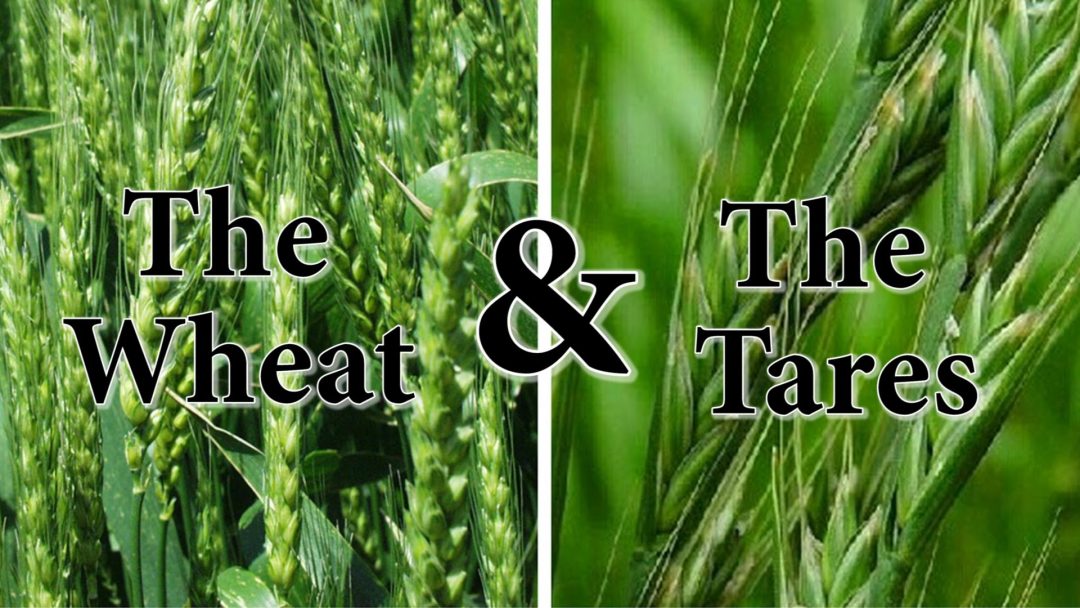
The Parable of the Wheat and the Tares (Matthew 132430)
TARES (Heb. זוּנִים, zunim ), the darnel - Lolium temulentum, weed which grows among grain, particularly wheat. The grains resemble those of wheat so that it is very difficult to separate them by sifting, and as a result they are sown together with the wheat and grow with it in the field. Darnel flour is poisonous and gives a bitter.